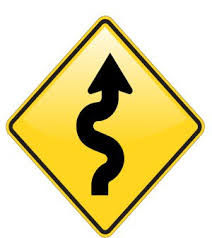“On the day I forgave my father, my life began.”
—Pat Conroy
Do you find it hard to forgive what you can’t forget? Do you think you need to forget in order to fully forgive? Do you think you must automatically trust and reconcile once you’ve forgiven someone?
These are just some of the hard questions Dr. David Stoop covers in his priceless little book Forgiving What You’ll NEVER Forget. I picked it up in the Midway airport in Chicago while suffering through a ten-hour flight delay. (Now I’m sort of thankful for the delay!)
For those of you unfamiliar with Dr. Stoop, he is a clinical psychologist who can be regularly heard on New Life Live radio program. He founded the Center for Family Therapy in Newport Beach, California and is an adjunct professor at Fuller Theological Seminary.
The back cover blurb says:
“Forgiveness is an essential part of being a Christian, but that doesn’t make it easy. What do we do when confronted with the unforgivable—an act that shakes our moral foundations to their roots, often committed by someone trusted and loved? Murder, sexual, abuse, adultery—all leave lifelong wounds. Thankfully, they are all trespasses that, through the grace of God, can be forgiven.
“Dr. David Stoop compassionately guides you down a biblical road, from the pain of bitter hurt to the peace found only in heartfelt forgiveness, even for the worst of offenses. In doing so, he opens up the way for you to experience the freedom that forgiveness brings.”
So just how do you forgive the unforgivable?
I think most of us have asked ourselves that question at one point, or many, in our lives. If you’re a follower of Christ, you feel obligated or moved by compassion and love of our Savior to forgive. If you’re not a believer, you might be more moved to get even or stay angry. Forever.
The 160-page, almost pocket-sized book contains chapters on—
- Apology Not Accepted—including the definition of forgiveness, the difference between forgiveness and reconciliation, and when it’s difficult to consider forgiveness
- Myths and Truths about Forgiveness—this chapter includes some great questions to determine where you fall on the forgiveness spectrum and understanding common fallacies and myths about forgiveness
- A Radical Forgiveness—this covers the history of God’s forgiving nature throughout Scripture, including the Old Testament and a comparison of Jewish and Christian teachings on forgiveness; and Christians’ tendency toward conditional forgiveness.
- Choosing to Forgive—Stoop discusses the false paths of denial and bitterness we sometimes take. He also covers self-blame, obsession with the event, depression and shame along with seeking revenge and withdrawing. And he talks about the potential dangers of denial.
- The Path of Forgiveness—Interestingly enough, forgiving often involves a path that looks like the five stages of grief, with grief, anger, sadness, action steps to achieve forgiveness, exploring the possibility of reconciliation, and then learning to trust again, which can be a huge obstacle for some to overcome.
- Forgiving Ourselves—This issue can be tough for a couple of reasons: sometimes we don’t think about doing it; and, sometimes our standards are higher than God’s.
- A Step Beyond Forgiveness—This chapter contains some amazing stories on the power of forgiveness and prayer—to move toward forgiving someone who really doesn’t deserve it, binding and loosening sins, and being freed from bitterness. It’s about stepping out beyond what you thought, and knew, were humanly possible to see God’s power work in and through you to change lives.
- The Benefits of Forgiveness—There are numerous benefits received when you forgive, including physical, emotional, relational and spiritual benefits.
Dr. Stoop wraps up the book by addressing some of the most common questions asked about forgiveness.
This little gem is a short read, but not necessarily an easy one. It could rekindle some pain and bitter memories you wanted to keep dormant. It could challenge your beliefs and behavior. It could move you to positive action. But if you work through the questions at the end of each chapter, and put into practice what the author counsels, I know you’ll feel free!

Forgiving What You’ll NEVER Forget is available on Amazon.com in both paperback and Kindle editions and on barnesandnoble.com.
Until next week,
May your heart and mind be lightened by forgiveness!
Blessings,
Andrea
May you prosper in all things and be in health, just as your soul prospers (3 John 2).






